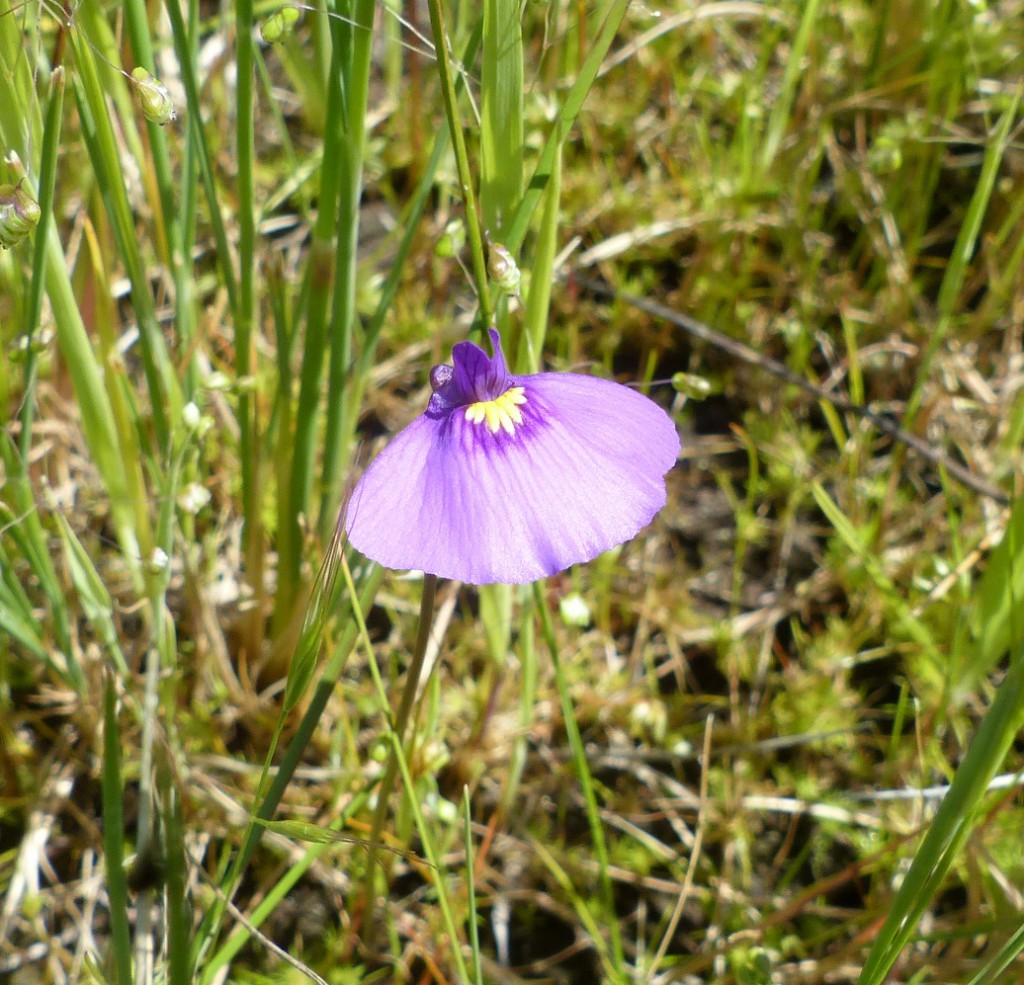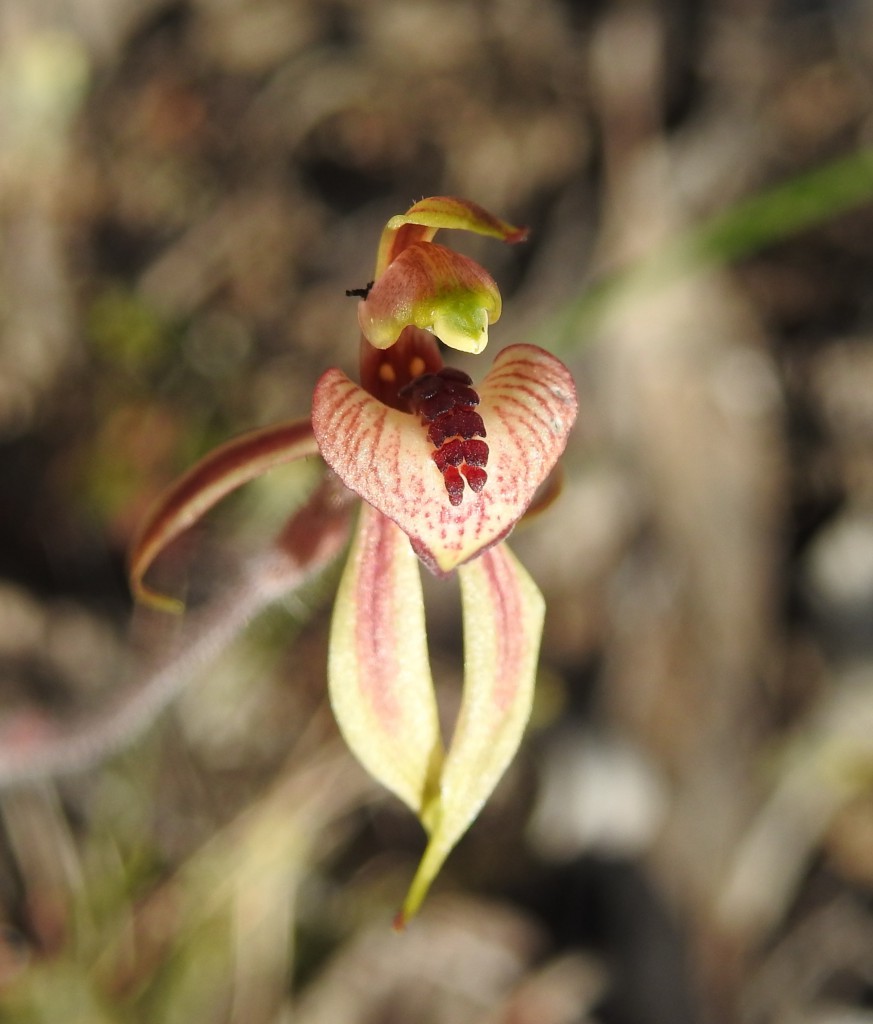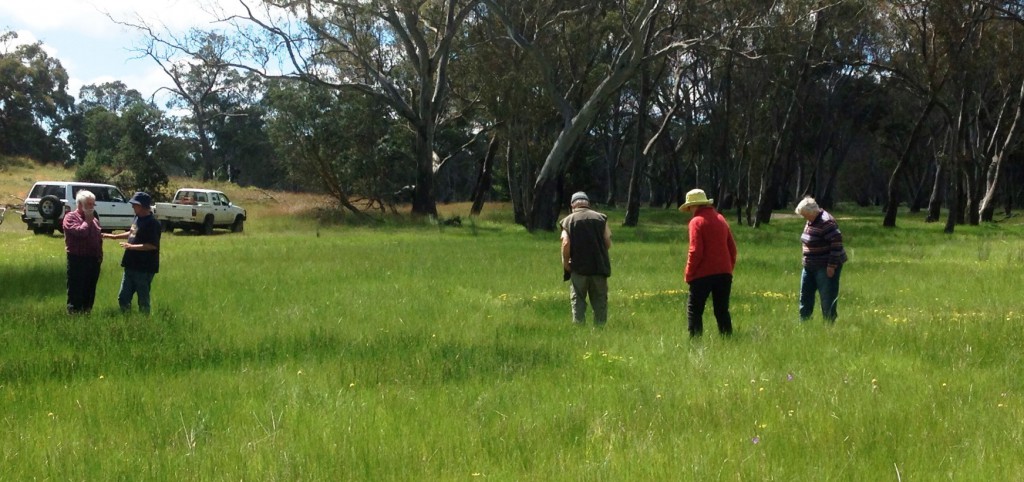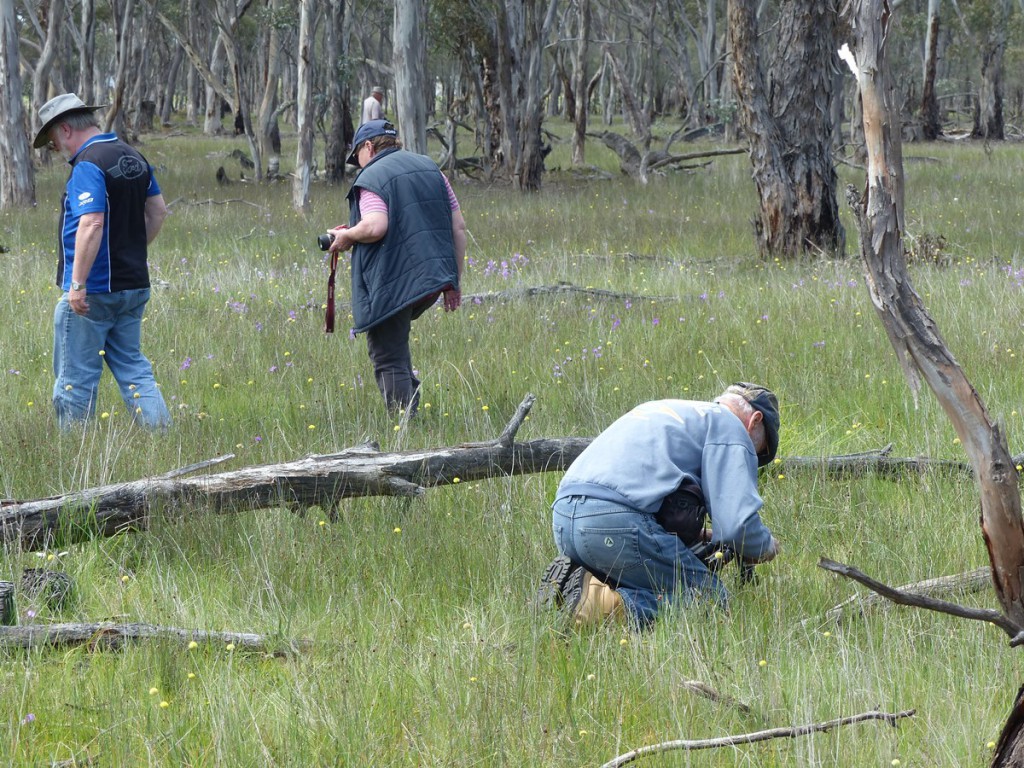Field Naturalists tour of Eaglehawk Waterhole a great success
The Annual AGM and Campout for the SE Field Naturalist Society was held last weekend at the Black Cockatoo Bush Camp. This campout brings together all Field Naturalist groups from around the region including Mt Gambier, Millicent, Naracoorte and Bordertown. On Saturday Oct 14th the group come out to Eaglehawk Waterhole for a tour around to see the results of the last few years restoration efforts by Nature Glenelg Trust, including areas tackled by Landscape Links (DEWNR) and Greening Australia Victoria.
The group met at the camp area by 0930 to be greeted with a banner and posters showing the areas where revegetation activities, monitoring points and other areas of interest have occurred. Andy Lines, NGT’s resident caretaker, has been volunteering his time to spray out areas of burnt veldt grass to encourage natural regeneration of natives and to minimise the recovery of this perennial grass. Interestingly, a regionally significant bird Diamond Firetail (or Diamond Sparrow as Andy calls them) have made a particular bee-line for one burnt area and we managed to snap a few photos.
The field naturalists group were interested in this management style and offered support and ideas of other methods to use in unison for controlling veldt grass. Input such as this is always appreciated.
As we reported in our September newsletter, we were supported by the Green Army program earlier in 2017 to help construct two small weirs out of soil to prevent water from flowing off the wet flats and into the Eaglehawk dam. This weir has done its job already with several rare plants popping up their heads including these Fairy Aprons (which area new to the property flora list), Tatiara Pea and Swamp daisy. The group spent considerable time admiring these small wetland plants they’d either never seen or hadn’t seen for some time.

Many hundreds of these Fairy Aprons or Purple Bladderwort(Utricularia beaugleholei) are now visible on wet flat restored by weir this season.
A short drive from this spot, Andy then treated the group with another recent and new find for the property. It was an orchid this time called the Thick-lipped Spider Orchid (Arachnorchis cardiochila) with its heart-shaped labellum (or lip). A good sized colony exists in the SA Blue Gum woodland area.
Habitat for biodiversity comes in various forms. Plants are essential and so are logs. Out the front of the property we showed the numerous logs shifted by Green Army teams to the group which were placed out into the Landscape Links revegetation area. Not only do they add aesthetic appeal but offer small creatures especially reptiles and insects a place to live. Speaking of which, we also lifted some roofing tiles placed out as a survey and monitoring technique within the revegetation area to find two species of skink that have moved in when the sun finally broke through the clouds.
Late in the afternoon the field naturalists group then headed back to the Black Cockatoo Bush Camp, where they had their evening meal, AGM meeting, and a talk by invited guest Mark Bachmann, who spoke about the journey that led to NGT’s purchase of Eaglehawk Waterhole in 2013, and an update on the latest news from NGT’s restoration reserve at Mt Burr Swamp.
All up a terrific day!




